How to Tune a Melodica
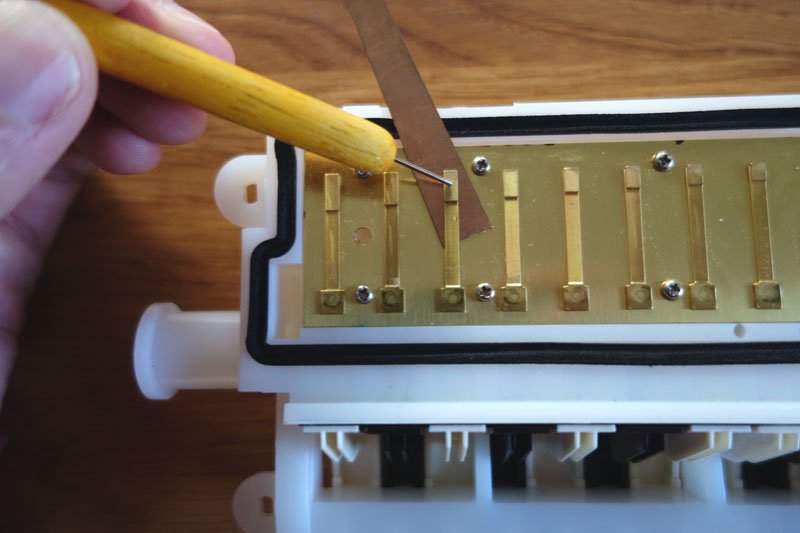
How to tune a melodica
This is a basic tutorial on tuning a melodica. Melodicas are from the free reed family of instruments, which include the harmonica (mouth organ), accordion and concertina. Just like their other family members, melodicas need regular tuning if they are being played a lot. Tuning a melodica is not complicated, but it can be fiddly, and takes some practice. It is also time consuming and requires patience. When learning, it is possible to permanently damage some of the reeds, so it would be wise to start with an old inexpensive model.
Each note on a melodica has a corresponding reed. A reed is a vibrating piece of metal, riveted against a window in a frame (reed plate). The principle of tuning a reed is simple. When a reed is sounding too low (flat), material must be removed from the top of the reed. When a reed is sounding too high (sharp), material must be removed from the base of the reed.
New melodicas are never perfectly in tune, and some are wildly out of tune. This Yamaha P37D Pianica
was quite sharp on the whole, but also had some flat notes
The tools:

You’ll need:
1 Paper and a pen
2 Screwdriver
3 A scraper
4 A Metal File
5 A shim/support
6 Small container
7 A Tuner
8 A Cloth
The scraper is homemade from a piece of cylindrical wood and a 1mm cobalt drill bit. You could alternatively use a small angled jewellers’ file, or purchase a professional harmonica scraper or file
.
The file is used to sharpen the scraper. It must be used constantly to keep the scraper sharp, avoiding too much pressure on the reed, which can cause it to bend.
The shim/support is a thin piece of flexible metal which is used to support the reed when scraping it.
The screwdriver is used to open the case of the melodica, and then to open the reed chamber. On the Yamaha melodica, the screws for the case were the same size as for the reed chamber. They may be differing sizes on other melodica makes, therefore requiring an extra (probably smaller) screwdriver.
There are many tuners available, including some good ones available on the iphone, such as iStroboSoft. The tuner can be set to A=440, which is a common standard for playing with other musical instruments, or if you will be playing very loudly, you can tune it higher (A=442), as overblowing causes the pitch to flatten.
Instructions:
Make a list of every note on the melodica

Play each note into the tuner, one by one, and write down how sharp or flat it is on the pad
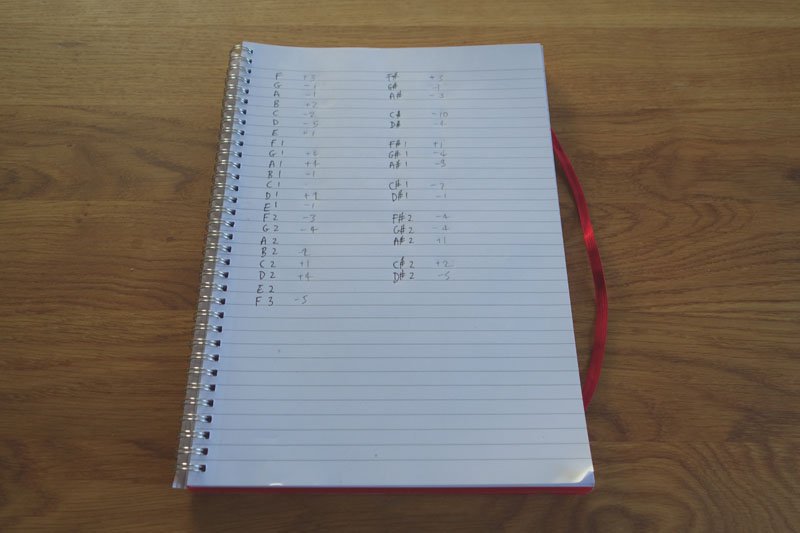
Place the melodica face down on a table. Locate the screws on the back panel and remove them. On the Yamaha P37D, there are 4 screws.
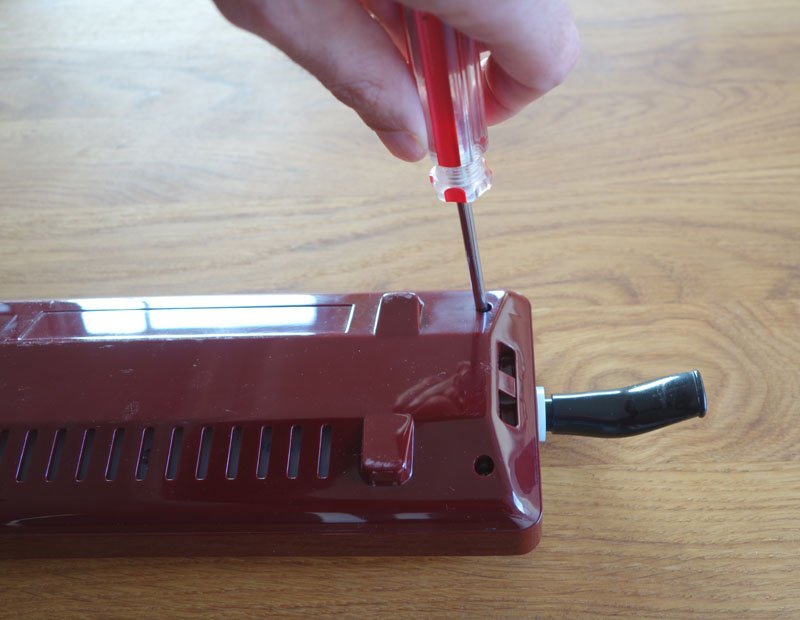
Place the screws in a small container
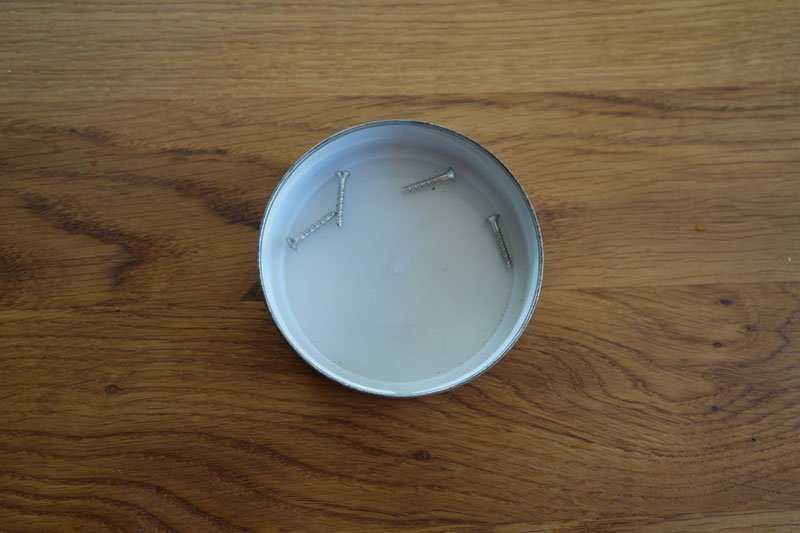
Turn the melodica around and remove the mouthpiece
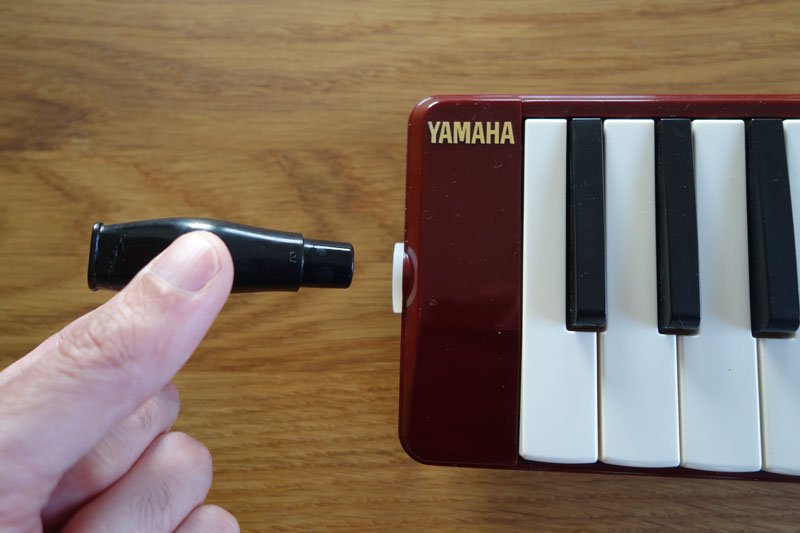
Remove the left panel

Remove the right panel
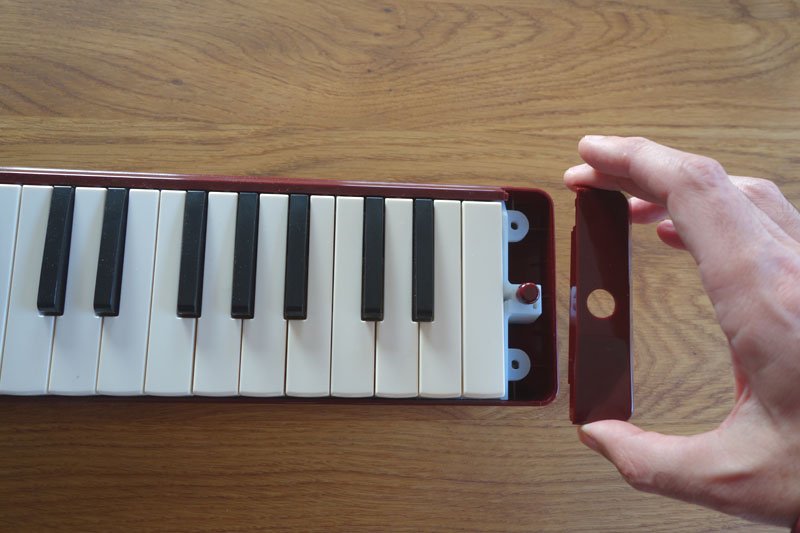
Lift the keyboard out of the case

Place the keyboard face down on the table and locate the five screws. Remove the screws and place them in the container
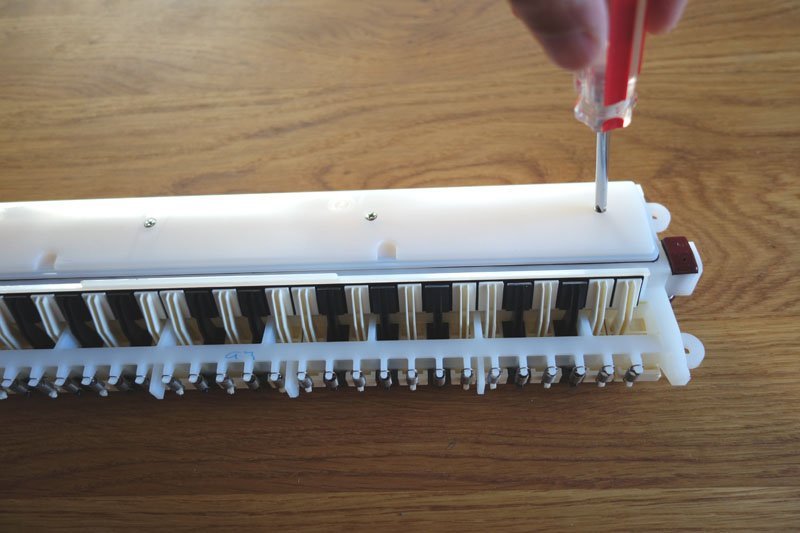
Lift off the back panel
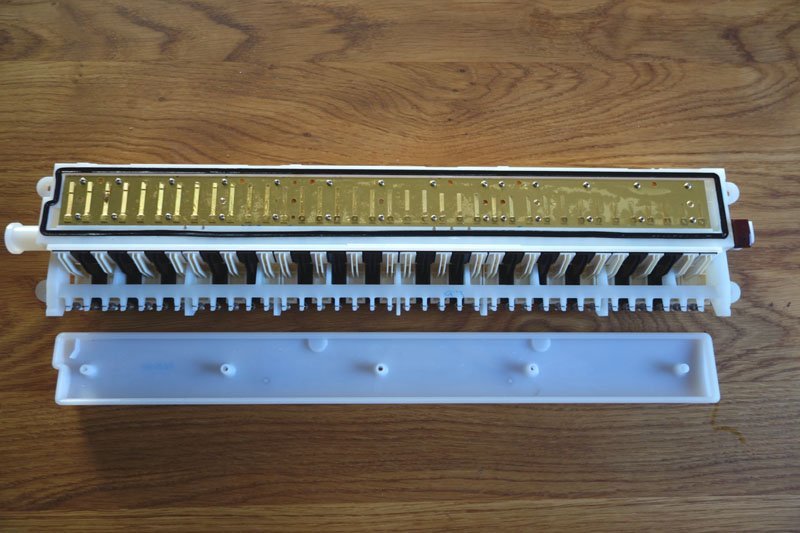
If the seal comes out, it can be gently put back in place

If you’ve been playing the melodica recently, the reeds may be wet. You can use a soft cloth to gently remove any moisture.
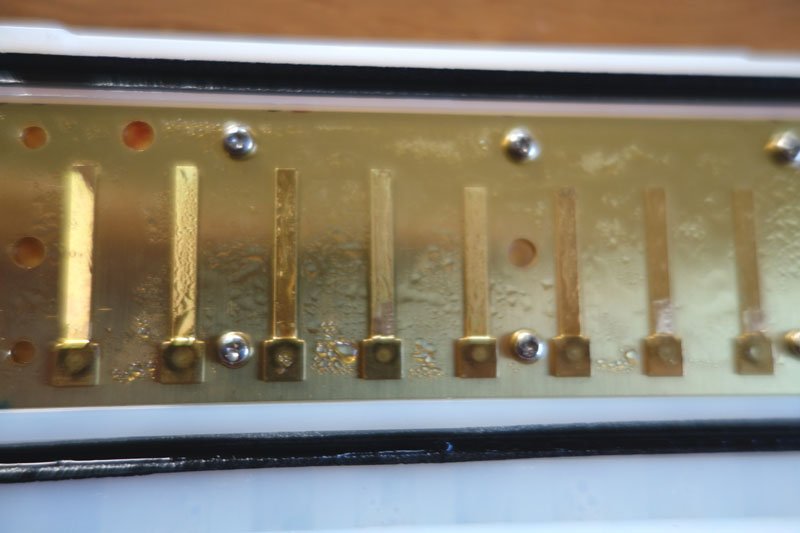
Identify the lowest reed on the melodica. If the mouthpiece is on your left, the lowest reed is the furthest reed to the left, and corresponds with the lowest F on the keyboard. Map out some of the notes on the reed plate with a marker to help you quickly spot them while tuning

The first note, low F is noted as being 3 cents sharp. It needs to be flattened by 3 cents if it is to be in tune. To flatten the reed, material needs to be removed from the base of the reed. Slide the shim underneath the reed to give it support, and make a couple of very gentle scrapes with the scraper. In the photo, the scraper is pointing to the area where material is to be removed. When scraping, do not use this angle – hold the scraper in line with the reed. After scraping, gently ping (flick) the reed.
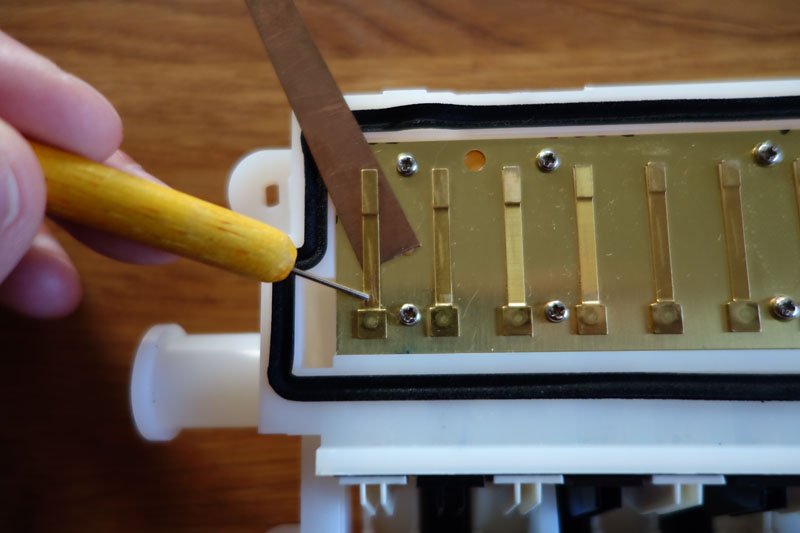
The next reed to the right (F#) is also too sharp, so the scraping process is repeated here – removing material from the base of the reed.
The next note is G, which is 1 cent too flat. Material must be removed from the tip of the reed to raise the pitch. It only needs to be raised by 1 cent, so the lightest scrape is made at the top of the reed. In the photo, the scraper points to the area, but when scraping, the file must be in line with the length of the reed. After scraping, gently ping (flick) the reed.

This process is repeated on every reed which needs adjusting, removing material from the base of the reed when flattening the pitch (if it is too high), or from the tip of the reed when sharpening the pitch (when it is too low). As the notes get higher, the reeds get smaller, and less material needs to be removed
On the smaller reeds, it can be tricky to get the shim/support underneath. In this case, push the thin end of the shim into the slight gap between the top of the reed and the reed plate. The reed will be pulled slightly downwards.
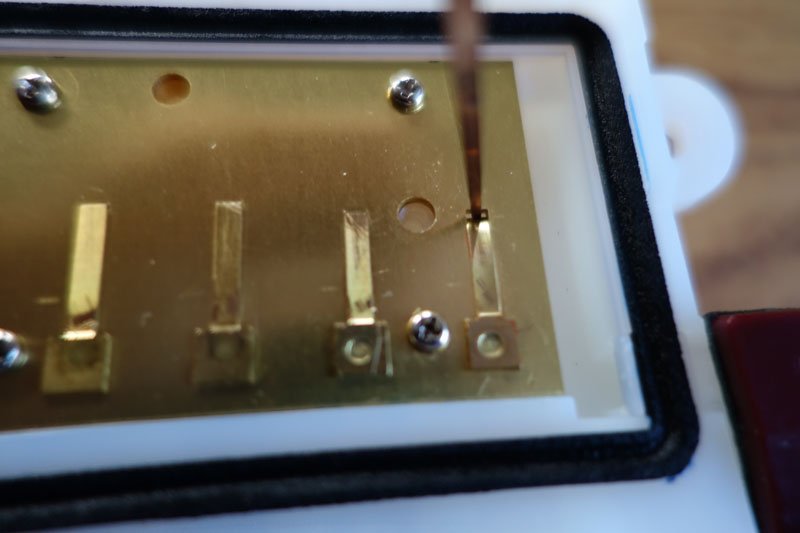
Then lever the shim away from the reed, towards the reed plate. The reed should flick upwards, with the shim/support underneath. It can then be adjusted accordingly before scraping
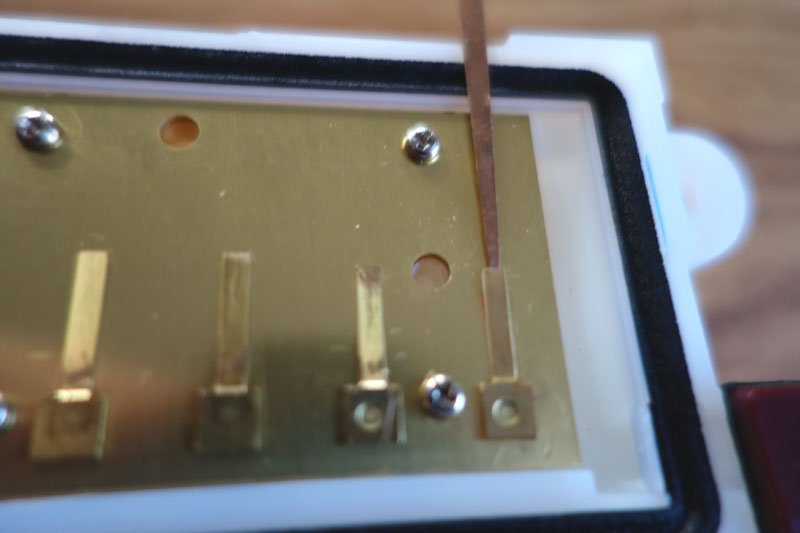
When all reeds have been adjusted, replace the cover of the reed chamber, and tighten the screws. Go through each note again with the tuner and write down the new tunings. Some notes will be in tune, while others will need more adjustment. This process will be repeated several times before the melodica is in tune. When you are satisfied, place the melodica back into the case, put the left and right panels in place, replace the 4 screws and mouthpiece, and start playing!
Similar article: Buying a Melodica

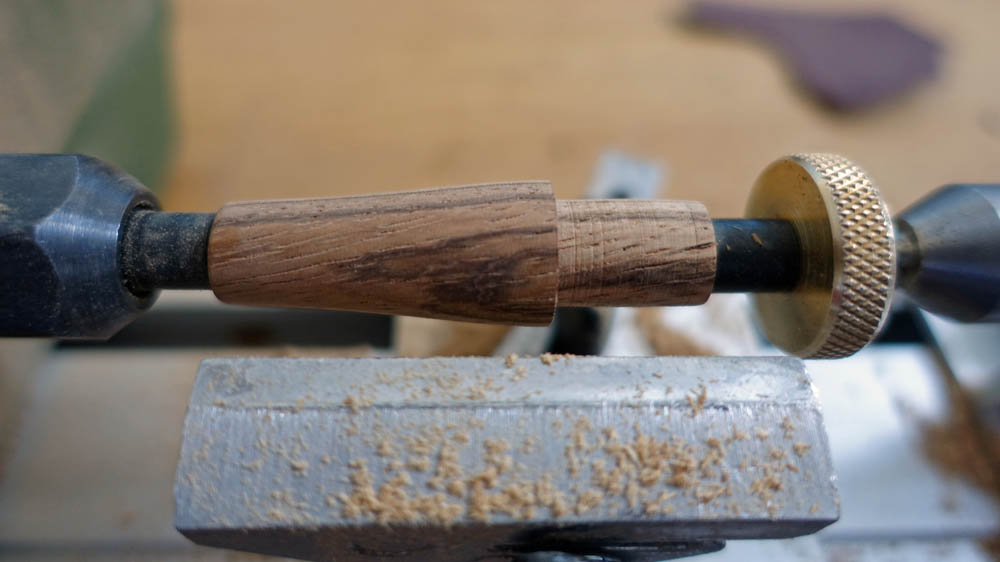
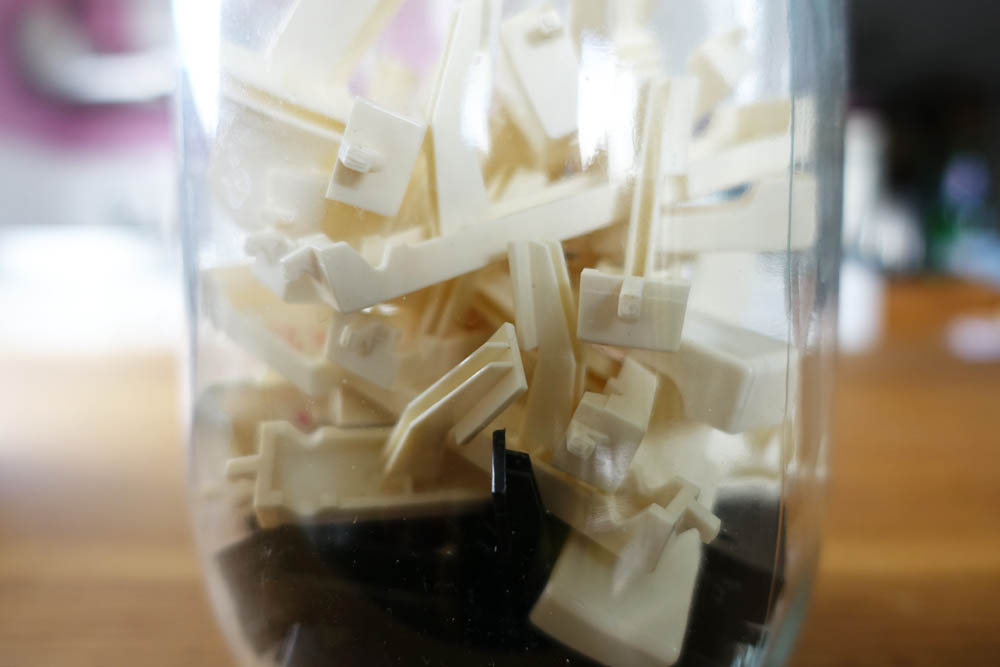
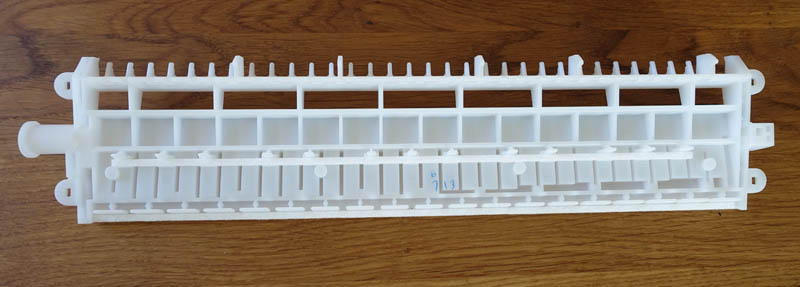
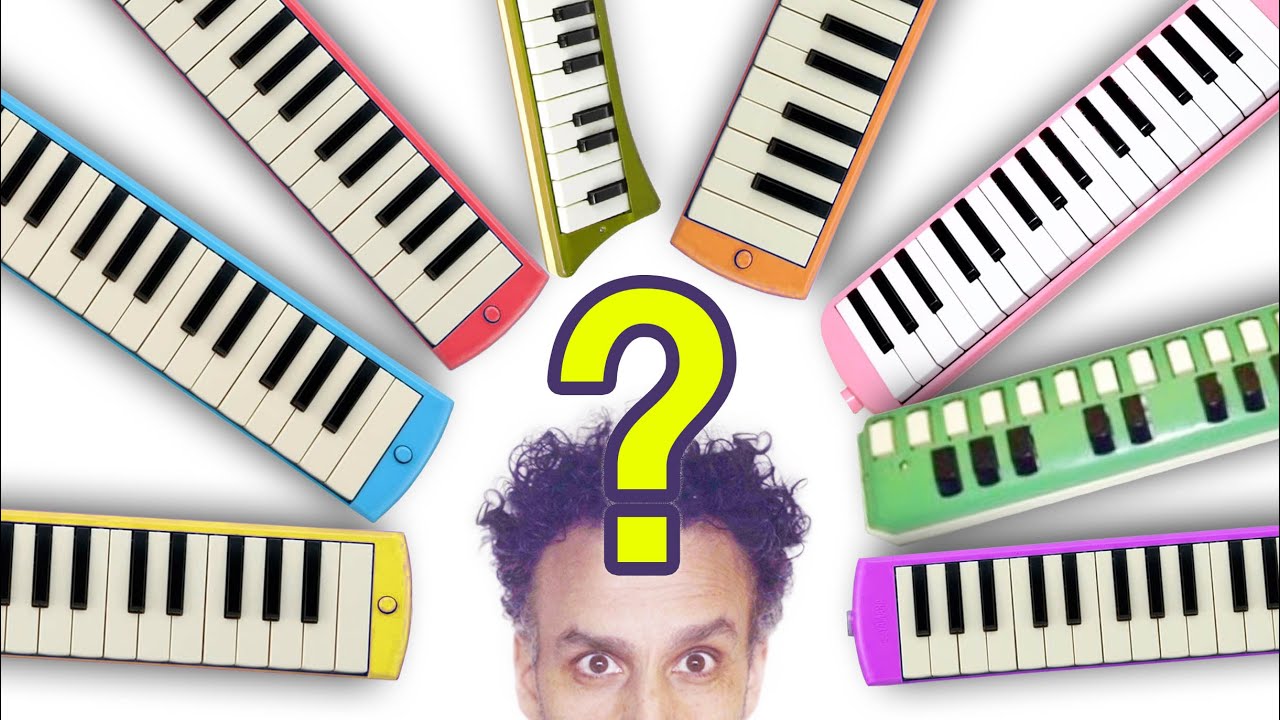

For those who need more courage to tune, hop over to the online harmonica forums, and you’ll find a group that considers this process BASIC reedwork. If you don’t have the specialist tools, grab something like a shim and a battery-powered engraving pen and get to! Or ask a harmonica tech in the neighborhood for help.
Very true Greg, harmonica players do this all the time. Melodica players are just starting to realise that melodicas need tuning!
What is the generally decent tuning for the non professional? Is 5 cents good enough, high or low? I saw the pic where a reed that was out by ONE cent being tuned. Is that really necessary to be that close? Temperature can change tuning. Why does a reed out by one cent need tuned?
Hi Russell, you’re right, melodica tuning is quite unstable at the best of times, especially once moisture starts to collect on the reeds. I’ve started to get more relaxed on how close it needs to be.
Yikes. Not a musician who can do this stuff. But this is great, thank you, going to ask my piano tuner if she’s up to doing it for me. Got a Suzuki M32 and love it but left in car overnight and it got cold so wondering if that’s why it went out of tune. Argh. My bad.
Julie, I was in the same boat as you! But I couldn’t find anyone to tune my melodica, and had to learn myself. I’m pleased it did, because it eventually led to me making my own instruments. Why not buy a $10 instrument and give it a go?
I’m sure I’m not the only one to say this, but I personally am a bit uncomfortable tuning my melodica myself. Are there any places I might be able to take it to for tuning? I’ve called Family Music Center and Guitar Center, since I’m familiar with them, but neither place would tune it, so I’m feeling a bit stumped now.
It’s difficult finding anyone to tune a melodica!
Thanks for this information! 😀
It’s a pleasure José, glad its helpful 🙂
Hi Daren –
Any chance you can recover/repost the lost images in this article?
Thanks!
Hi Paul, should all be back now, thanks for the heads up 🙂